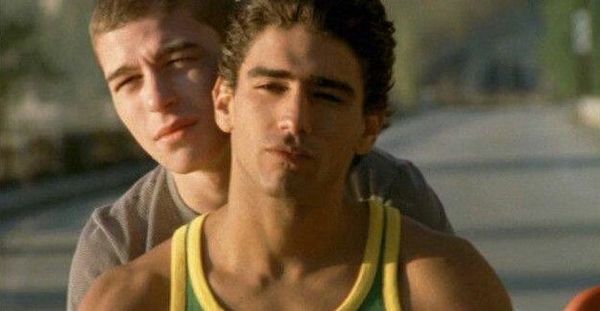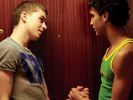Eye For Film >> Movies >> Three Dancing Slaves (2004) Film Review
Three Dancing Slaves
Reviewed by: Angus Wolfe Murray

In the tradition of dans-vous-visage Gallic cinema, Three Dancing Slaves (Le Clan) cuts the audience no slack. It conveys a sexual intensity that is never exploited as box office bait and yet gives vent to suppressed fury that has warped the teenage experience since Rebel Without A Cause.
The mood is edgy and dangerous, personified by a performance of exceptional power from Nicolas Cazale, as Marc, the middle of three brothers, living with their father on a smallholding within sight of the Alps.

The film is aggressively male. In fact, when a girl is introduced near the end, as older brother Christophe's fiancee, it is difficult not to see her as a transvestite. In the town, where the boys hang out, attitudes are hard, homoeroticism is rife, heads are shaved, iron is pumped and drugs are expensive.
At first, Marc appears as a leader, but the disparate group of unemployed lads that surrounds him has no real direction and soon his anger against his father and brothers, ever since their Algerian mother died, feels more self-destructive than self-motivated.
Although Marc's violent dispute with a biker gang dominates the way the story drifts ever closer towards tragedy, Christophe's attempt to go straight after prison and the youngest Olivier's recognition of his sexuality, as well as a new found confidence and responsibility, are given equal prominence.
The film's use of music is as fiercely original as its camerawork. In the Neuveau Realist school that began with La Haine and continues through the recent Les Mauvais Joueurs (Gamblers), this is a honourable addition.
Reviewed on: 10 Sep 2005

















